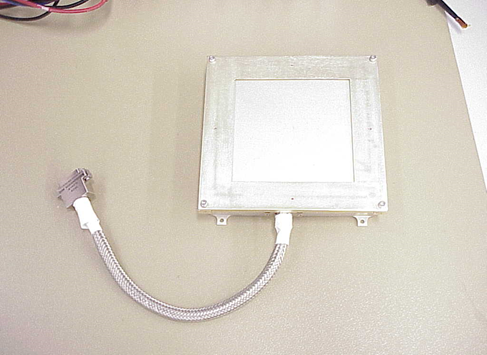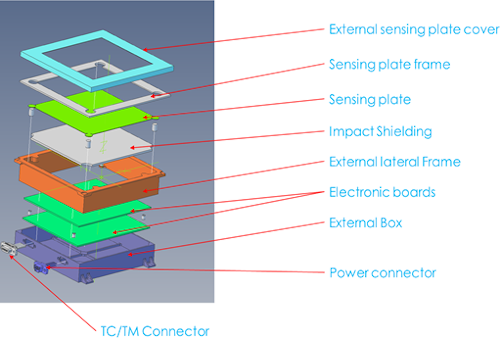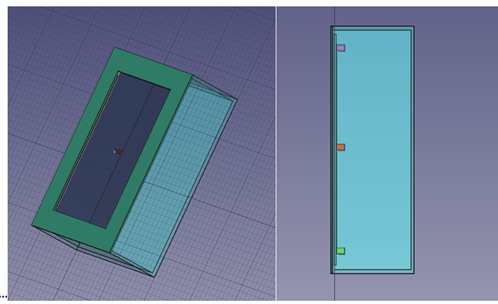- 1INAF-IAPS, IAPS, Roma, Italy (vincenzo.dellacorte@iaps.inaf.it)
- 2University Parthenope of Naples , Naples, Italy
- 3Centro di Ateneo di Studi e Attività Spaziali "Giuseppe Colombo" – CISAS, University fo Padova, Padova, Italy
- 4INAF-Astronomical Observatory of Trieste, Trieste, Italy
- 5ASI - Agenzia Spaziale Italiana, Rome, Italy
- 6Centro di Geodesia Spaziale (CGS) dell’Agenzia Spaziale Italiana , ASI, Matera, Italy
Introduction
Dust is a ubiquitous component of our galaxy and Solar System. The Earth accumulates roughly 100 tons of space dust per day, with dimensions ranging from nanometers up to millimeter [1]. Measurements of dust proper]ties and their distribution provide important information to space science in modelling the birth and growth of the Solar System [2]. The information gained from studying these small particles has been valuable for improving our understanding of the ongoing physical processes of asteroids, comets, Kuiper Belt objects, and planetary rings [3]. The dust particles majority originate within the Solar System, typically are produced by cometary activity or by impacts on planetary or asteroid surfaces. A portion of dust dates back to the birth of the Solar System and a small fraction is of interstellar origin. These particles travel with hypersonic speeds typically in the range 10–70 km/s. The interest to these particles is caused by the fact that they are (1) samples of a distant astonomical bodies, (2) major conrtibutors in the planetary surface growth, and (3) they provide information about the origin and dynamics of the early Solar System
GIADA instrument onboard Rosetta/ESA space probe, an example of dust impact sensor.
The Grain Impact Analyzer and Dust Accumulator (GIADA) on board the ESA Rosetta probe performed the dynamical study of the dust ejected by the comet 67P/Churyumov-Gerasimenko. [5]. GIADA measured speed, optical cross section and momentum of dust particles larger than 60 μm and the cumulative dust flux for particles smaller than 5 μm. One of the three sub-systems constituting GIADA, the Impact Sensor (IS – Figure 1) [5], measured the momentum of individual dust particle [6]. The GIADA-IS consisted in a squared aluminium plate with a sensitive area of 100 mm x 100 mm, five ceramic piezoelectric sensors (PZTs), with a resonant frequency of 200 kHz, connected to the Al plate (in the plate center and at the 4 corners). A dust particle impact generates the Lamb waves propagating over Al plate.. The PZTs detect these waves and convert them into an electric potential proportional to the particle’s momentum.
We propose to include an instrument of similar concept as GIADA-IS in the scientific payload of Comet Interceptor (and cubesats) for measuring dynamical properties of dust.

Figure 1 GIADA impact Sensor
DISC onboard Comet Interceptor spacecrafts.
DISC (Figure 2) is a dust impact sensor, part of Dust Field and Plasma instrument., This instrument will be mounted on two of the three Comet Interceptor (CI) spacecrafts, It will provide an in situ characterization of dust particles in the coma of a Dynamically New Comet or an interstellar object.
In particular, it will measure the momentum of individual dust particles during the high-speed CI flyby to its target. From the momentum, knowing the speed of the S/C, individual particle speed is retrieved. DISC overall aims are to determine:
- dust particle mass distribution;
- dust particle count;
- dust particle impact duration;
- dust particle density/structure;
- dust coma structures.
The sensor capabilities will allow to measure during CI close encounter: dust mass distribution from particles with mass 10-15–10-8 kg ejected from the nucleus (this measurement will be performed by DISC onboard 2 different CI spacecrafts to disentangle the dust flux coming directly from the nucleus and the dust flux of particles reflected by the solar radiation pressure. DISC will be able to count particles with mass >10-15 kg.
Despite the difference in physical processes in the hyper speed impacts (the fly by speed of CI will be from 7 to 70 km/s) and low speed impacts (measured by GIADA-IS during Rosetta mission), DISC mechanical configuration will allow provide particles momentum measurements. In fact, the shockwaves generated by the high-speed impacts become Lamb wave (measured by GIADA-IS) in the close proximity of the particle impact point.

Figure 2 DISC exploded view.
Impact Particle Monitor-a proposed dust sensor for cubesat
We propose to equip one of the external panels of a cubesat with PZT transducers. This external panel will act as a dust sensitive surface and will be able to detect and monitor particles impacting the cubesat (Figure 3). This configuration can be applied in different mission scenario:
- • Low Earth Orbit to monitor μm- to mm-sized debris (high speed impacts)
- Small exploration cubesat: detection of stable or transient dust structures around small bodies, planets or satellites.
- In situ detection of dusty or icy plumes with cubesats .

Figure 3 ILP mounted on an external face of a 6U Cubesat: left) sensing surface; right) PZT transducers.
Acknowledgements
This research was supported by the Italian Space Agency (ASI) within the ASI-INAF agreement I/032/05/0.
References
[1] F.J.M. Rietmeijer, et al. 2016, Laboratory analyses of meteoric debris in the upper stratosphere from settling bolide dust clouds, Icarus, 266, 217-234.
[2] M. Fulle, et al. 2016, Comet 67P/Churyumov-Gerasimenko preserved the pebbles that formed planetesimals, Monthly Notices of the Royal Astronomical Society, 462, issue Suppl 1, pp. S132-S137.
[3] M. Fulle, et al. 2017, The dust-to-ices ratio in comets and Kuiper belt objects, Monthly Notices of the Royal Astronomical Society, Mon. Not. R. Astron. Soc., 469 (Suppl_2): S45-S49
[4] Della Corte et al. 2014 GIADA: its status after the Rosetta cruise phase and on ground activity in support of the encounter with comet 67P/Churyumov-Gerasimenko, Journal of Astronomical Instrumentation
[5] Esposito et al. 2002, Physical aspects of an Impact Sensor for the detection of cometary dust momentum onboard the Rosetta Space mission. Adv. Space Research.
[6] Della Corte, V. et al., 2016, 67P/C-G Inner Coma dust properties from 2.2 AU inbound to 2 AU outbound to the Sun, Monthly Notices of the Royal Astronomical Society, 462, pp. S210-S219.
How to cite: Della Corte, V., Rotundi, A., Bertini, I., Zakharov, V., Inno, L., Longobardo, A., Aboudan, A., Bettanini, C., Colombatti, G., Piccirillo, A., Martellato, E., Ivanovski, S., Ferraioli, G., Dirri, F., Palomba, E., Ammanito, E., Amoroso, M., and Sindoni, G.: Dust Impact Sensors for small spacecrafts , Europlanet Science Congress 2020, online, 21 Sep–9 Oct 2020, EPSC2020-1014, https://doi.org/10.5194/epsc2020-1014, 2020.

